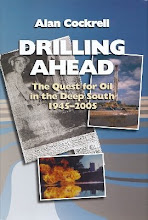This is the 100th Decision Height―a good place to pause and consider where to go with it. I ask you.
The first was December 28th, 2007. It began when my sons urged me to blog so they could keep up with my whereabouts and ramblings. I wanted to know what a blog was and why it had such an ignoble name. (I never found out about the name.) The first readers were friends and relatives, but most of them lost interest and fell out. Yet Decision Height spread out and developed a sizable audience, most of whom I have never met. I suppose that's a natural evolution of this sort of thing. Last week I was riding a regional jet and showed the captain my ID badge. He said, “I read your blog!” Cool.
Google keeps blog statistics for only two years, so the complete history isn't available. But the blog has seen over 50,000 page reviews in that period from the world over, mostly the US, Canada, Australia, and the UK. The most popular posts in the last two years have been:
- He'll Take You Up, He'll Take you Down 10/07/2010
- Back on the Vodka Express 08/04/2010
- Attitude 11/25/2010
I would not have picked those as my top three.
The top three drawing the most comments:
- Curt's Bad Day 03/20/2011
- I, the Guinea Pig 07/15/2009
- Dreamin' the Dream 01/03/2010
I set out to make Decision Height not just another “I Went, I Saw, I Did” chronicle, but rather a tone poem of the airline world, seen from where I sit, in the left seat of a Boeing 757 or 767, (depending on which straw I draw on any given day). I have tried to stick closely to the theme of the blog, which is it's very name: The decisions an airline pilot daily makes that effects so many people. I figured this theme would draw two types of readers, interested enthusiasts and the others out there making the decisions. I think it's done that.
Also, I vowed not to whine and to leave politics, both corporate and national, out of it (a vow I have infringed upon occasionally). And I wanted to focus on the good qualities of the folks I have met and had the pleasure to fly with.
I ask those of you who dare make comments what topics and writing style you like best.
Do you prefer commentary on current affairs of the airline world? Ex: No Kids Allowed 03/13/2010 and About Sully 03/02/2009.
Or do you like people stories better? Ex: Judging Jenny 10/28/2010 and A Blue Moment 08/11/2009.
How about trip stories? Ex: Groundhog Days 01/24/2011.
Do like reading about what has happened to me in the bygone days, such as the recent three part story of how I got hired?
I enjoy writing in a lyrical, style, if the subject supports it. Example: Aiming for the Dawn 07/07/2009. Is that your preference too?
For those of you who don't comment, you can vote in the poll I've put up on the sidebar.
One day soon I'll bow out. Which of you left-seaters out there—or left-seaters in-the-making—are interested in taking over the controls of Decision Height? Shoot me an e-mail.
Finally, I've been considering a book about the airline pilot's world, written in the similar flavor and tone of my book Tail of the Storm, which was a memoir of military flying in the Persian Gulf War. Decision Height has helped me accumulate much material for that. Will I find a publisher for that subject? I don't know, but am inclined to write it anyway.
We'll see.
Because I fly.
I laugh more than other men
I look up an see more than they,
I know how the clouds feel,
What it's like to have the blue in my lap,
to look down on birds,
to feel freedom in a thing called the stick.
Who but I can slice between God's billowed legs,
and feel then laugh and crash with His step.
Who else has seen the unclimbed peaks?
The rainbow's secret?
The real reason birds sing?
Because I Fly,
I envy no man on earth.
Grover C. Norwood



